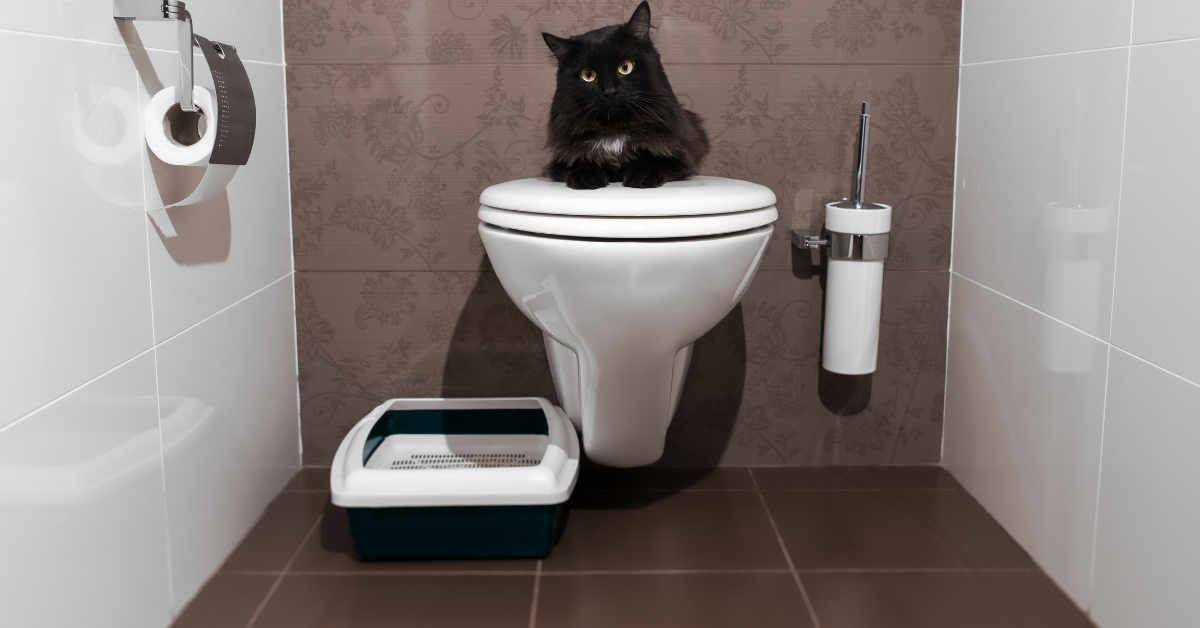Why Flushing Cat Poop Down Your Toilet Is Bad - Tips for Proper Disposal
Why Flushing Cat Poop Down Your Toilet Is Bad - Tips for Proper Disposal
Blog Article
Almost everyone seems to have their own unique rationale involving How to Dispose of Cat Poop and Litter Without Plastic Bags.

Intro
As cat proprietors, it's necessary to be mindful of exactly how we take care of our feline close friends' waste. While it might appear hassle-free to flush pet cat poop down the commode, this method can have destructive repercussions for both the atmosphere and human wellness.
Environmental Impact
Purging feline poop presents unsafe pathogens and parasites right into the water, posing a significant risk to aquatic communities. These contaminants can negatively impact marine life and compromise water quality.
Health Risks
In addition to ecological worries, flushing pet cat waste can additionally posture health dangers to people. Feline feces might have Toxoplasma gondii, a bloodsucker that can trigger toxoplasmosis-- a potentially serious disease, particularly for expectant women and individuals with damaged body immune systems.
Alternatives to Flushing
Luckily, there are safer and a lot more accountable ways to take care of feline poop. Consider the complying with alternatives:
1. Scoop and Dispose in Trash
The most usual technique of throwing away feline poop is to scoop it into a biodegradable bag and toss it in the trash. Be sure to utilize a dedicated clutter scoop and take care of the waste without delay.
2. Use Biodegradable Litter
Go with eco-friendly feline litter made from products such as corn or wheat. These litters are environmentally friendly and can be safely taken care of in the garbage.
3. Bury in the Yard
If you have a backyard, think about hiding pet cat waste in an assigned location away from veggie yards and water sources. Make sure to dig deep adequate to avoid contamination of groundwater.
4. Install a Pet Waste Disposal System
Purchase an animal waste disposal system particularly designed for pet cat waste. These systems use enzymes to break down the waste, minimizing odor and ecological impact.
Final thought
Responsible family pet possession extends past providing food and shelter-- it additionally includes correct waste management. By refraining from purging pet cat poop down the commode and opting for alternate disposal approaches, we can reduce our ecological impact and safeguard human wellness.
Why Can’t I Flush Cat Poop?
It Spreads a Parasite
Cats are frequently infected with a parasite called toxoplasma gondii. The parasite causes an infection called toxoplasmosis. It is usually harmless to cats. The parasite only uses cat poop as a host for its eggs. Otherwise, the cat’s immune system usually keeps the infection at low enough levels to maintain its own health. But it does not stop the develop of eggs. These eggs are tiny and surprisingly tough. They may survive for a year before they begin to grow. But that’s the problem.
Our wastewater system is not designed to deal with toxoplasmosis eggs. Instead, most eggs will flush from your toilet into sewers and wastewater management plants. After the sewage is treated for many other harmful things in it, it is typically released into local rivers, lakes, or oceans. Here, the toxoplasmosis eggs can find new hosts, including starfish, crabs, otters, and many other wildlife. For many, this is a significant risk to their health. Toxoplasmosis can also end up infecting water sources that are important for agriculture, which means our deer, pigs, and sheep can get infected too.
Is There Risk to Humans?
There can be a risk to human life from flushing cat poop down the toilet. If you do so, the parasites from your cat’s poop can end up in shellfish, game animals, or livestock. If this meat is then served raw or undercooked, the people who eat it can get sick.
In fact, according to the CDC, 40 million people in the United States are infected with toxoplasma gondii. They get it from exposure to infected seafood, or from some kind of cat poop contamination, like drinking from a stream that is contaminated or touching anything that has come into contact with cat poop. That includes just cleaning a cat litter box.
Most people who get infected with these parasites will not develop any symptoms. However, for pregnant women or for those with compromised immune systems, the parasite can cause severe health problems.
How to Handle Cat Poop
The best way to handle cat poop is actually to clean the box more often. The eggs that the parasite sheds will not become active until one to five days after the cat poops. That means that if you clean daily, you’re much less likely to come into direct contact with infectious eggs.
That said, always dispose of cat poop in the garbage and not down the toilet. Wash your hands before and after you clean the litter box, and bring the bag of poop right outside to your garbage bins.
https://trenchlesssolutionsusa.com/why-cant-i-flush-cat-poop/

Hopefully you enjoyed reading our post about Can You Flush Cat Poo or Litter Down the Toilet?. Many thanks for finding the time to browse our short article. Do you know somebody who is excited by the subject? Please feel free to promote it. I am grateful for your time. Visit again soon.
Prices & Booking Report this page